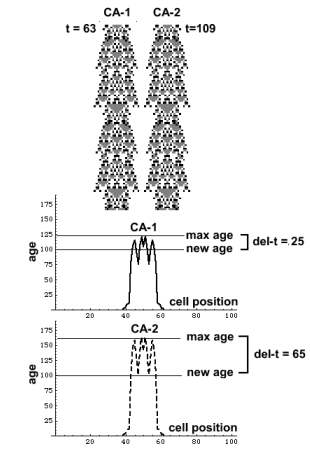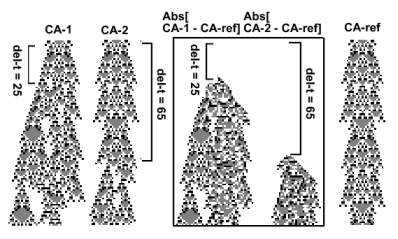 |
Age limit (max age)
Observe the two CA. One exists 63 days and the other 109. In order to know which one is older, they have to be injured (perturbed) . There are two kinds of injury: Somatic, when one or more cells are killed (set to 0), and age injury, when the age of some cells is changed. Here we apply the second.
First, the experimental clock it set to
0. Below are two age distributions of uninjured CA observed at the beginning
of the experiment. At t = 5 the age of the three left most cells was lowered to 100 days. . Their age limit (max age), was set to the current
maximal age of each CA. In CA-1 max age =125, and in CA-2 max
age = 165 CA.
.
 |
The image below depicts the absolute difference between each CA and an uninjured CA which serves as reference. As long as both When CA are the same, their absolute difference = 0 (= white). In CA-1, injury becomes visible before CA-2, indicating that it is younger.
 |